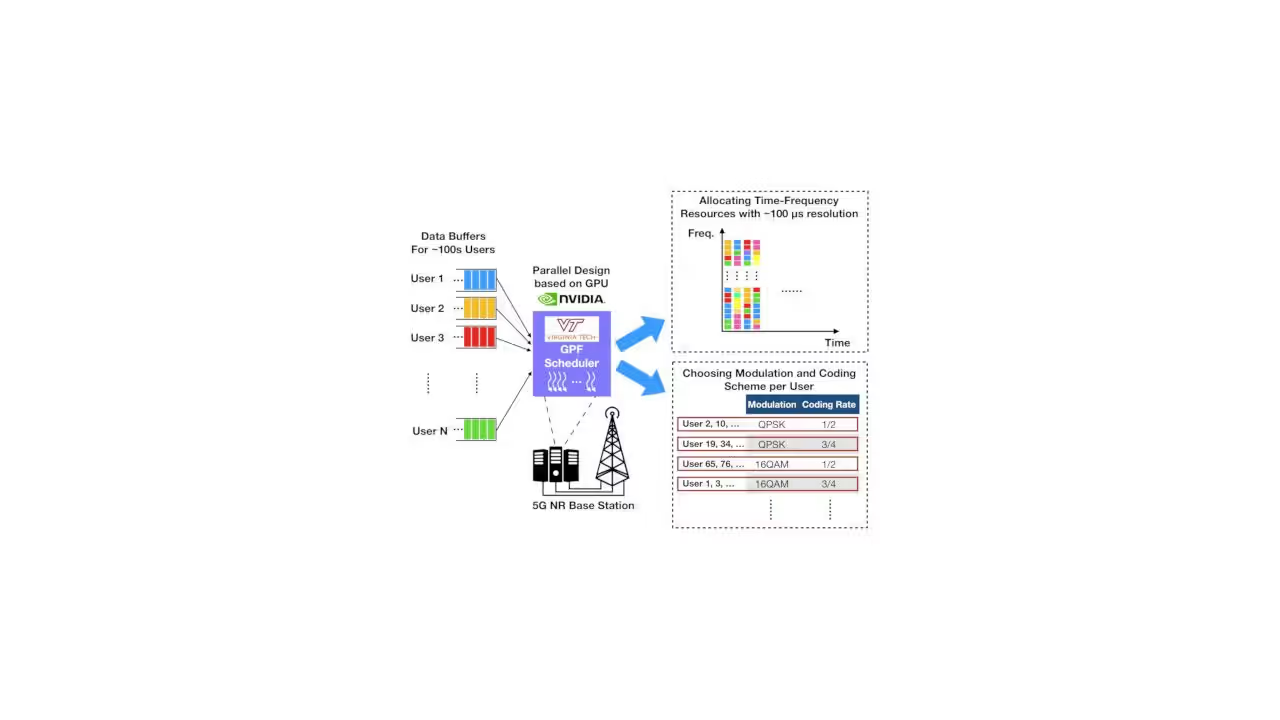
Researchers Demonstrate First Optimal-Latency Proportional-Fair Scheduler for 5G NR
Researchers from the Virginia Polytechnic Institute and State University, working with Nvidia, have released details of a proportional-fair (PF) scheduler designed for minimum latency on 5G New Radio (5G NR) cellular networks, which uses graphics processors to accelerate compute performance at the base station level.
Detailed in the paper "GPF: A GPU-based Design to Achieve ~100 μs Scheduling for 5G NR," Nvidia's design aims to address issues with the lowered minimum time resolution for scheduling data transmissions - around a tenth that of Long Term Evolution (LTE) - and the increased computational complexity of 5G New Radio. "This creates a new technical challenge," Nvidia's Yan Huang, Shaoran Li, Tom Hou, and Wenjing Lou in a joint write-up of the project. "How can we design a scheduler for NR that provides optimal scheduling solution while working with the ~100μs time resolution?
"We tailored GPF for implementing on GPUs [Graphics Processing Units]. The basic idea: find scheduling solutions through solving a certain number of small and independent sub-problems on the GPU in parallel. The solution to each sub-problem is a feasible solution to the original PF scheduling problem. The output solution of GPF is then the best one among all sub-problem solutions. We use a one-dimensional grid of 30 thread blocks to generate and solve 300 sub-problems, with each block addressing 10 sub-problems. When the best sub-problem solution from each block is found, we use another thread block to find the best output scheduling solution.
"Since we only consider K out of 29N (N is the number of users per cell) sub-problems in each TTI, can we find a near-optimal scheduling solution," the team asks. "The answer is yes. Although each sub-problem solution only has a small probability to be near-optimal, we will have a high probability of achieving near-optimality when K is practically large (e.g., for K=300)."
The result is, Nvidia claims, the world's first successful PF scheduler capable of meeting the ∼100µs timing requirements of 5G NR - and proof that the cellular networks of the future will be relying more than ever on edge processing capabilities, bringing general-purpose processing (GPP) capabilities out of remote data centres and onto the network edge using platforms like the LimeNET CrowdCell demonstrated last month at Mobile World Congress (MWC) 2019.
The team's paper is available now, while a summary is provided on the Nvidia developer site.